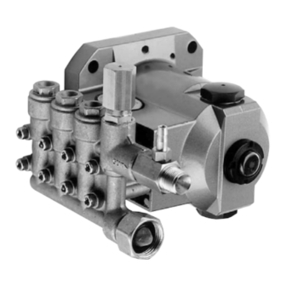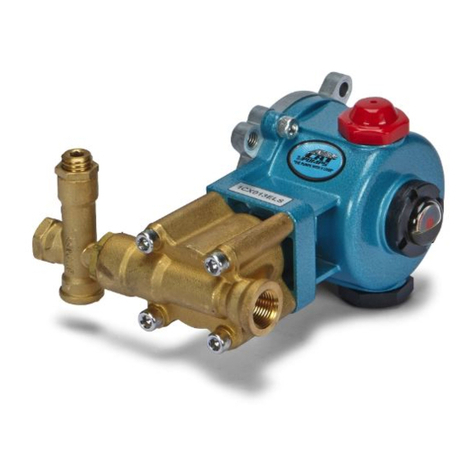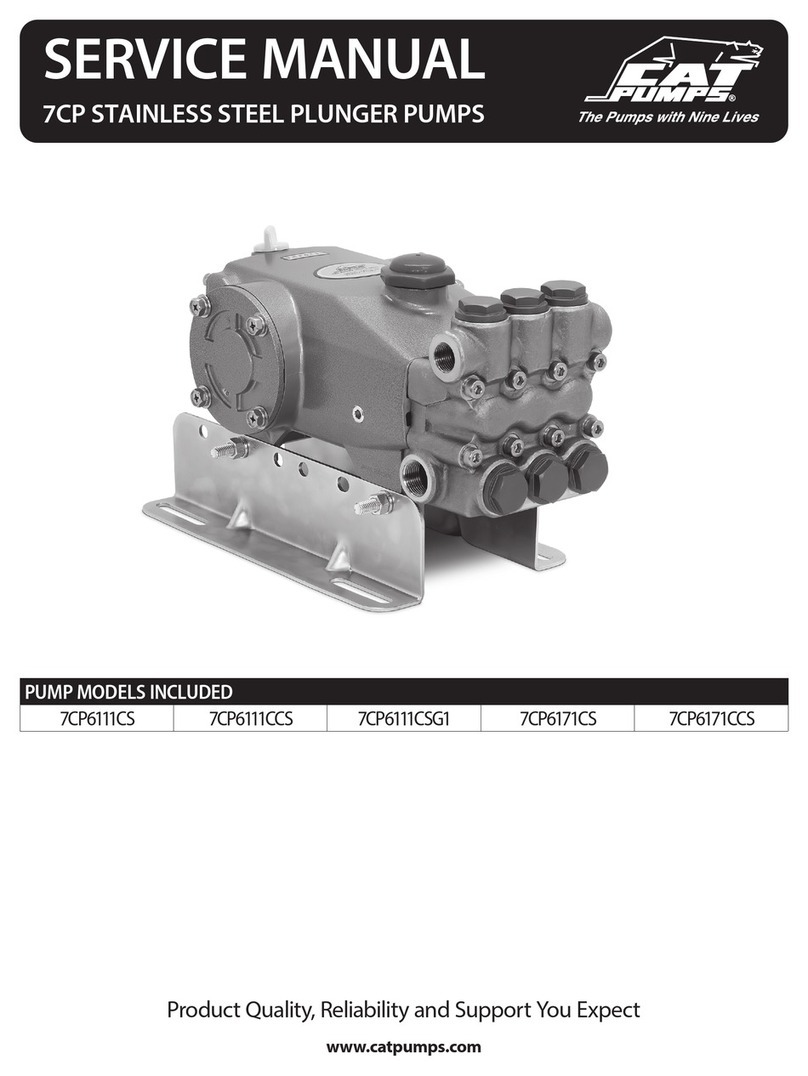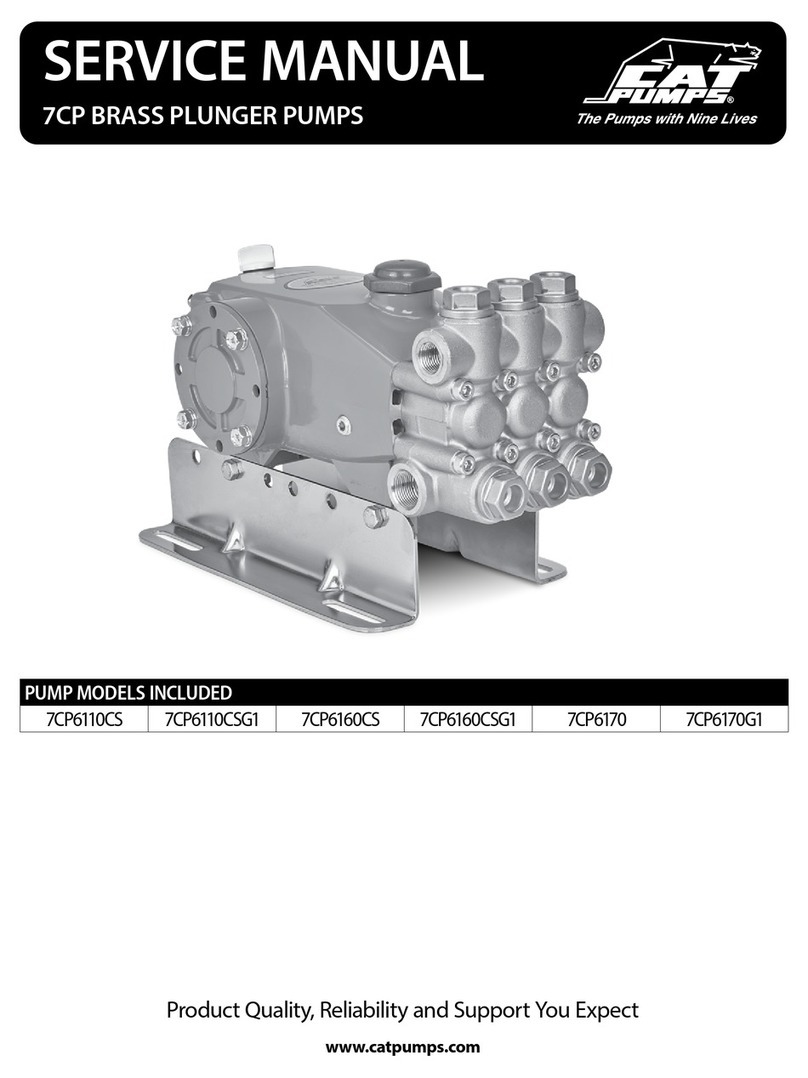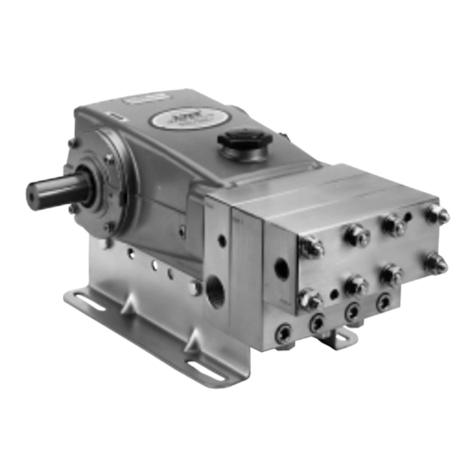
10
F. OVER PRESSURIZATION HAZARD
Do not operate high pressure pumping system unless extraordinary safety precautions are observed. A high pressure pumping system can
deadhead or over pressurize causing serious personal injury and property damage.
1. All high pressure systems require a primary pressure regulating device (i.e., regulator or unloader) and a secondary pressure safety relief device
(i.e., pop-o valve, safety valve, rupture disc) to assure proper pressure setting and overpressure protection.
2. All high pressure systems require a pressure gauge to monitor pressure settings and avoid overpressure of equipment or personal harm.
3. Install primary pressure relief device on the discharge side of the pump.
4. Install secondary pressure relief device between the primary device and pump.
5. Install pressure gauge onto the discharge manifold or in the discharge line near the manifold.
6. Open all valves on discharge side of plumbing before operation.
G. OXYGEN HAZARD
Do not charge Prrrrr-O-Lators (Pulsation Dampeners) with Oxygen. Oxygen may cause an explosion causing personal injury, death or property
damage.
1. Use Nitrogen only when charging pulsation dampeners, DO NOT USE OXYGEN.
2. Use proper charging tools to charge pulsation dampeners.
3. Charge pulsation dampener within specications stated on data sheet to assure proper pulsation dampening and prevent failure of bladder.
H. FALL HAZARD
Do not operate pressure washer while standing on slippery or unstable surface unless extraordinary safety precautions are observed. Pressure
washing may create slippery surface on which a person may slip and fall causing personal injury or death.
1. Wear suitable footwear to maintain a good grip on wet surfaces.
2. Do not stand on ladders or scaolding.
3. Do not over reach or stand on unstable supports.
4. Keep good footing and balance and hold gun with both hands to control kick back.
A. IMPROPER USE OF FITTINGS HAZARD
Do not operate the pump with improperly connected, sized, worn or loose ttings, pipes or hoses. Operating the pump under these conditions
could result in personal injury and property damage.
1. Ensure all ttings, pipes and hoses are properly rated for the maximum pressure rating and ow of the pump.
2. Check all ttings and pipes for cracks or damaged threads.
3. Check all hoses for cuts, wear, leaks, kinks or collapse before each use.
4. Ensure all connections are tight and secure.
5. Use PTFE thread tape or pipe thread sealant (sparingly) to reconnect plumbing. Do not wrap tape beyond the last thread, this will prevent tape
from becoming lodged in the pump or accessories.
6. Apply proper sealants to assure secure t or easy disassembly when servicing.
B. FROZEN LIQUID HAZARD
Do not operate the pump with frozen liquid. Operating the pump under this condition could over pressurize and jettison the manifold from the
crankcase causing personal injury and property damage.
1. Store pump or pumping system in an environmentally controlled room protected from freezing temperatures.
2. Follow procedures in TECH BULLETIN 083 to winterize pump.
C. CLEANING PUMP HAZARD
Do not use solvents that are ammable and toxic to clean or degrease equipment. Use of these solvents could result in personal injury and
property damage.
1. Follow safety instructions as found in MSDS or SDS or on packaging of each liquid.
2. Clean equipment in a well ventilated area.
3. Disposal of solvents to be in accordance with local, state and federal regulations.
D. OPERATING BEYOND SPECIFICATIONS HAZARD
Do not operate the pump outside the specications of individual pump data sheet or service manual. Operating the pump under these
conditions could result in personal injury and property damage.
1. Do not operate the pump faster than the maximum recommended rpm.
2. Do not operate the pump at pressures higher than the maximum recommended pressure.
3. Do not operate the pump at temperatures higher than the maximum recommended temperatures.
4. Do not use accessories that are not compatible or rated for the pump.
CAUTION


